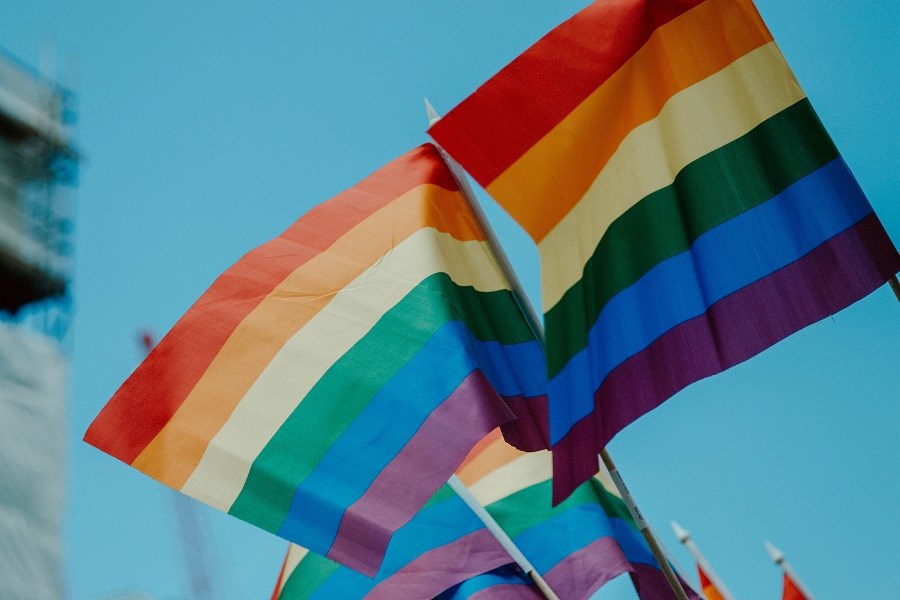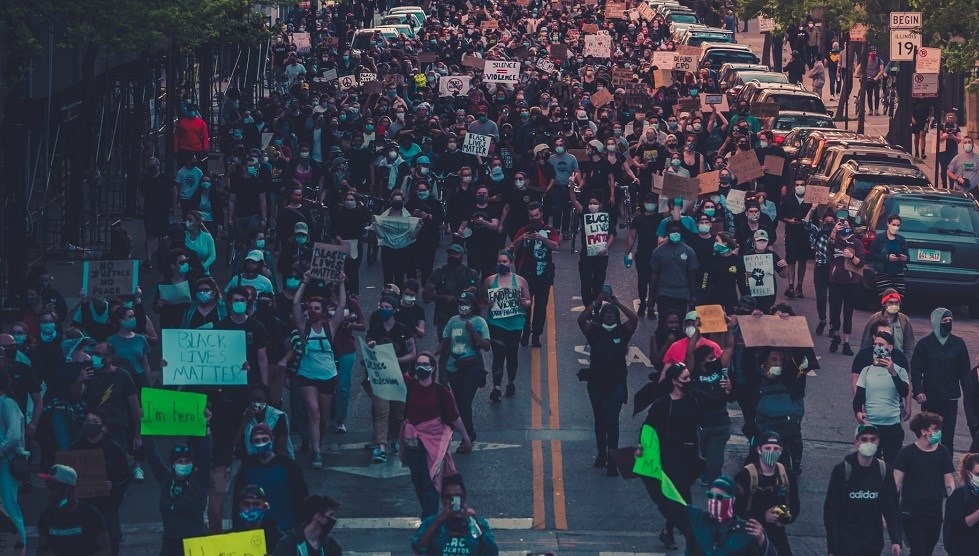
Canada enjoys a (mostly) deserved reputation as a progressive nation when it comes to LGBTIQ2S* rights and protections. In 2005, Canada became the first country in the Americas and the fourth in the world after the Netherlands, Belgium, and Spain, to recognize marriage equality. Every Canadian enjoys protections under the Charter of Rights and Freedoms that, together with the Criminal Code, defends against discrimination based on sexual orientation or gender identity and expression. And all Canadians have the right to access healthcare.
These three pillars go a long way towards ensuring that LGBTIQ2S Canadians have equal rights and access to opportunities. That said, there remain challenges that carry financial repercussions in some aspects of everyday life unique to LGBTQI2S people.
Work and Money
Though on paper there is no work discrimination against LGBTIQ2S people in Canada, in practice, things are a bit muddier.
The 1950s, for example, saw the start of the “LGBT Purge”, a decades-long campaign to remove anyone suspected of being LGBTIQ2S from their jobs in public service, including the Armed Forces and RCMP. The practice, challenged by a lesbian army officer, came to an end in 1992, and Prime Minister Justin Trudeau issued a formal apology in 2017. However, in 2021, LGBTIQ2S Canadians are still not explicitly named in the Federal Employment Act which means that protections, perhaps implied, are not the law.
According to a 2020 report on workplace discrimination by Egale, LGBTIQ2S Canadians still face widespread inequity, particularly in terms of access to work. Egale, a Canadian advocacy group and a leader in research on the nation’s LGBTIQ2S issues, iterates barriers to hiring, wage penalties, and more instances of workplace harassment as major issues.
It’s not just lost wages. Consider also the missed opportunities of benefits such as medical, mental health, and dental coverage, bonuses, paid leave and vacations, and investment power in the form of RRSP contribution room and matching employer contributions.
Health Care
Canada has publicly funded universal health care that provides access in a relatively equitable manner to residents across the country. Each province and territory manages its own tax-funded insurance plan, and so the quality of health care varies depending on location.
In 2019, the Standing Committee on Health released a report on the health of LGBTIQ2S communities, which describes a host of factors contributing to inequities. These include social factors, legal factors, housing, and income and employment. The result of unequal treatment is a population with distinct and unmet health needs.
As an example, consider that bullying and gender policing result in lower rates of physical activity among LGBTIQ2S youth, which in turn leads to negative health outcomes. The problem comes full circle when an LGBTIQ2S person tries to receive care. They may be met with providers who aren’t educated about sexual and gender minorities, or who don’t ask appropriate questions. The “cost”, in these cases, is difficult to quantify but can be traced to overall wellness and happiness outcomes.
Finally, from a health care perspective, there are a few areas of medicine affecting sexually and gender diverse people more than their heterosexual or cisgender counterparts: AIDS and HIV treatment, family planning, and transgender health.
AIDS and HIV Treatment
Although anyone can contract HIV, the disease still disproportionately affects the LGBTIQ2S population. According to the most recent fact sheet from CATIE, nearly 52% of Canadians living with HIV are gay men and men who have sex with men.
People living with HIV in Canada enjoy an excellent prognosis although health care coverage for HIV management medications and the prophylactic, PrEP, vary by region. In terms of management medication, the costs vary by type and brand, but they are covered under some provincial plans, through some private (such as employer) plans, and some pharmaceutical programs can assist with the cost.
According to the BC Centre for Disease Control, a month of antiretroviral medication would cost between $300 and $500 if purchased outright. PrEP is included in every provincial plan, except for Manitoba’s where you can expect to pay between $250 and $1000 monthly. Both HIV medications and PrEP are available to First Nations and Inuit people, refugees, and Armed Forces through a federal plan.
Fertility and Adoption
While LGBTIQ2S people are not the only group that may need or want to adopt or use reproductive technologies like intra-uterine insemination (IUI), surrogacy, or in vitro fertilization (IVF), for many in the community, these services are the only ways to add children to their families.
Intra-uterine insemination (IUI) is the process of using fresh or frozen sperm from a known or unknown donor to impregnate a parent. It’s illegal to pay an individual for their sperm in Canada, and sperm purchased from a sperm bank will cost $400 to $650 plus shipping. Additional costs might include an orientation session (~$250), semen preparation (~$200), or semen storage (~$200 per year). Some provinces, like Ontario, have funding for IUI procedures but there is no federal coverage.
In Canada, surrogacy is legal but must be not-for-profit. Prospective parents can, however, pay out-of-pocket expenses to the surrogate and these can include, “maternity clothes, cost of medications and expenses incurred while travelling for medical appointments.” And, lost wages, if a doctor certifies in writing that the surrogate needs bed rest.
The cost of in vitro fertilization (IVF) treatments can run between $10,000 to $20,000 per cycle (and it may well take more than one), including consultations. Four provinces offer assistance. In Ontario, every person is funded for one round of IVF in their lifetime. New Brunswick has a grant where individuals can claim up to 50% of their costs. Quebec and Manitoba both offer tax credits.
For those who want to adopt, there are three routes: private, public, and international. With a private adoption agency, people can expect to pay between $10,000 to $20,000. Public adoption agencies, which are legislated and run differently in each province, don’t charge fees but the cost for the processing can be up to $3,000. International adoption is generally not available to LGBTIQ2S people.
Transgender health
For transgender-specific information on health care, see our companion article, The Financial Cost of Being Transgender in Canada.
Marriage Equality
Being married has always carried with it some financial incentives and since 2005, these benefits have been available to LGBTIQ2S Canadians. Let’s take a closer look:
Medical Benefits
Married couples that have employee benefits or private insurance can opt to cover their partners which could save them money on prescription drugs, dentistry, and medical specialists like mental health professional or ophthalmologists.
Pension
Same-sex partners can will their assets and pensions to each other.
Taxes
Married couples can take advantage of spousal credits, tax credit transfers, and transferring dividends. In retirement, they can use spousal RRSPs or split their pension income which can reduce their tax bill.
Aging
There is very little research about LGBTIQ2S seniors in Canada. In 2017, Egale sought to remedy this with an exploratory consult to identify issues but, as they note in their report, their sample of respondents trended white, cisgender, Ontarian, and under the age of 65. They specifically cited the need for inquiry into the lives of transgender and Two Spirit elders, and of people of colour.
The transition from independence to a care facility is generally difficult but for sexual minorities and gender diverse seniors, it can be tinged with a very real fear of discrimination, mistreatment, or even violence.
In Canada, there are few, if any, exclusively LGBTQI2S seniors’ homes, but there are facilities that bill themselves as “friendly” to the community. Some, like The Rekai Centres, are non-profit organizations while others are operated by municipally. Basic (shared) rooms start at around $1900 monthly, but in most cases there is a wait list.
Alternatively, an LGBTIQ2S senior could apply for home care, which is not publicly insured through the Health Act, but rather administered provincially or municipally with differing—but limited—assistance. The federal government does supply home care to on-reserve First Nations and some Inuit, as well at the RCMP, armed forces, and veterans. Of course, even if a senior gets lucky with a non-discriminating home aide, home care can increase isolation and other factors that have negative health outcomes.
The upshot of this situation is that it’s extremely important to plan for retirement to ensure access to proper care. The issues around workforce participation outlined above make this challenging for LGBTIQ2S Canadians, particularly for transgender or Two Spirit people, and for folks who experience multiple dimensions of discrimination like people of colour.
*LGBTIQ2S is an acronym for lesbian, gay, bisexual, transgender, intersex, queer, and Two Spirit. It is uniquely Canadian, and may be understood in place of LGBT+.




















